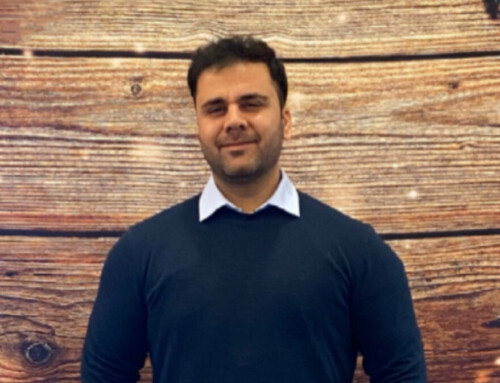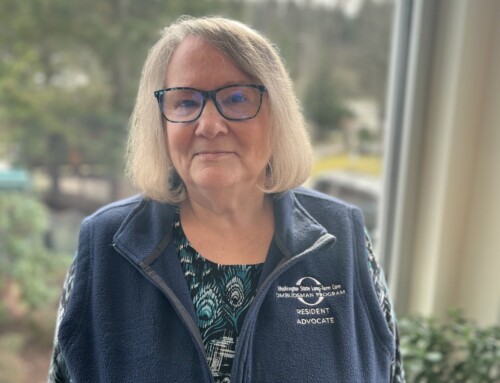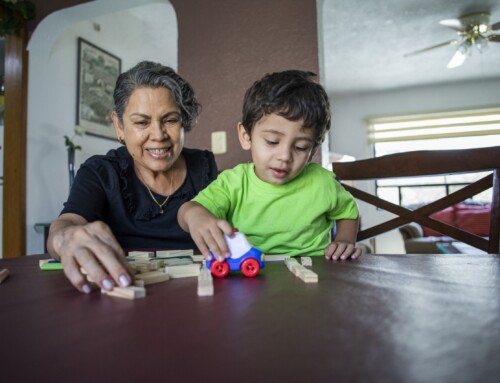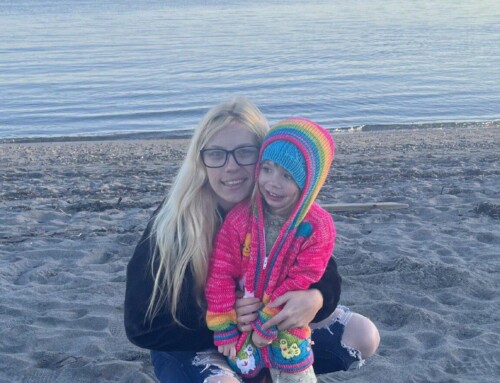“I really enjoy and believe in helping people without judgment, and that’s what housing first and harm reduction is. They go hand-in-hand.”
Chris Cates is one of MSC’s housing supervisors and is also one of the first in King County to use the housing first and harm reduction model back in 2011. After five years as a paralegal, Chris became one of the first case managers for the LEAD (Law Enforcement Assisted Diversion) program in Seattle and joined the MSC staff in 2018.
Simply put, the concept of housing first is prioritizing a stable living environment before addressing other issues or barriers someone may be facing. Harm reduction is trying to offer people safer solutions or practices as options.
“Housing first and harm reduction aren’t overnight fixes. It’s about building relationships, it’s baby steps,” shares Chris. Chris likes to share the story of Houston to show how the housing first and harm reduction model work:
Houston was known in downtown Seattle as one of those guys always screaming at buildings or screaming at people. Social workers and outreach staff were told not to approach him anymore. The police were very cautious with him. When I first met him, all I did was bring him a cup of coffee. I told him I’d be back to talk with him if he wanted to get well first. I was giving him, in a way, permission to get high before he talked to me which no one had ever done for him, it had always been punitive. It didn’t work right away, but I kept on bringing him coffee. Eventually it came to the point of him just seeing me and asking where his coffee was. Some people would get offended by that, but I was thinking this guy finally knows me and we’re building a relationship. I also started to bring him clean needles. I wouldn’t say anything, I’d just leave them there. It took about three months of coming to him with no judgment, and I got to know him very well and became his case manager. Through the relationship we had, I found out that he wasn’t yelling at people, he was yelling at the drugs because he hated them so much. He felt that he was a slave to them because if he tried to quit he’d get really sick. We got him housed, on methadone, and eventually clean. This is someone who hadn’t been housed for twenty years.
To be successful with the housing first model, Chris feels that providers need to follow three guidelines. First, you can’t have an ego. You aren’t going to be able to help everyone and you don’t always know what is best for someone. Second, you have to be consistent. Even if you give someone a cup of coffee and they call you all sorts of names, you still need to come back the next day with another cup of coffee. And finally, success with housing first is all about relationships and building trust.
Chris also has a personal history that helps him build meaningful relationships with those he is helping. After being in the military, Chris spent five years in the criminal justice system before he entered a diversion program and went to school to become a paralegal. This combination of education and criminal history was one of the reasons he was selected as one of the first case managers to pilot a harm reduction model with the Seattle Police Department.
“I kind of break the general rules,” shares Chris. “You’re always told you can’t be their friend or their family, but at the end of the day, you sort of are. Most of these people have nobody. So, they are my people. Yes, I may be their case manager, but that relationship has to be different than someone coming to talk to their therapist.”
Housing also isn’t going to be the answer for everyone, but everyone at least deserves the chance at housing. “One man had been homeless for a long time and once he was in housing, had pushed all the furniture to the walls and built himself an encampment in the middle of the room,” shares Chris. “That was someone who was so conditioned, he preferred to live on the street.”
“Housing first and harm reduction also aren’t free-for-alls,”shares Chris. “It’s not that people get do whatever they want and we expect them to eventually get better. It’s putting them in housing first because that’s a barrier, but one they are in housing there is structure and accountability. It’s letting them get housed and then working on their issues.
Chris supervises the staff at MSC’s William J. Wood (WJW) Veterans House in Federal Way. WJW has been a low-barrier housing program for veterans and their families. Under Chris’s leadership, this facility is now working towards becoming a true housing first model. If you have questions about housing first, harm reduction, or any of MSC’s housing programs, please feel free to reach out to MSC at [email protected].






